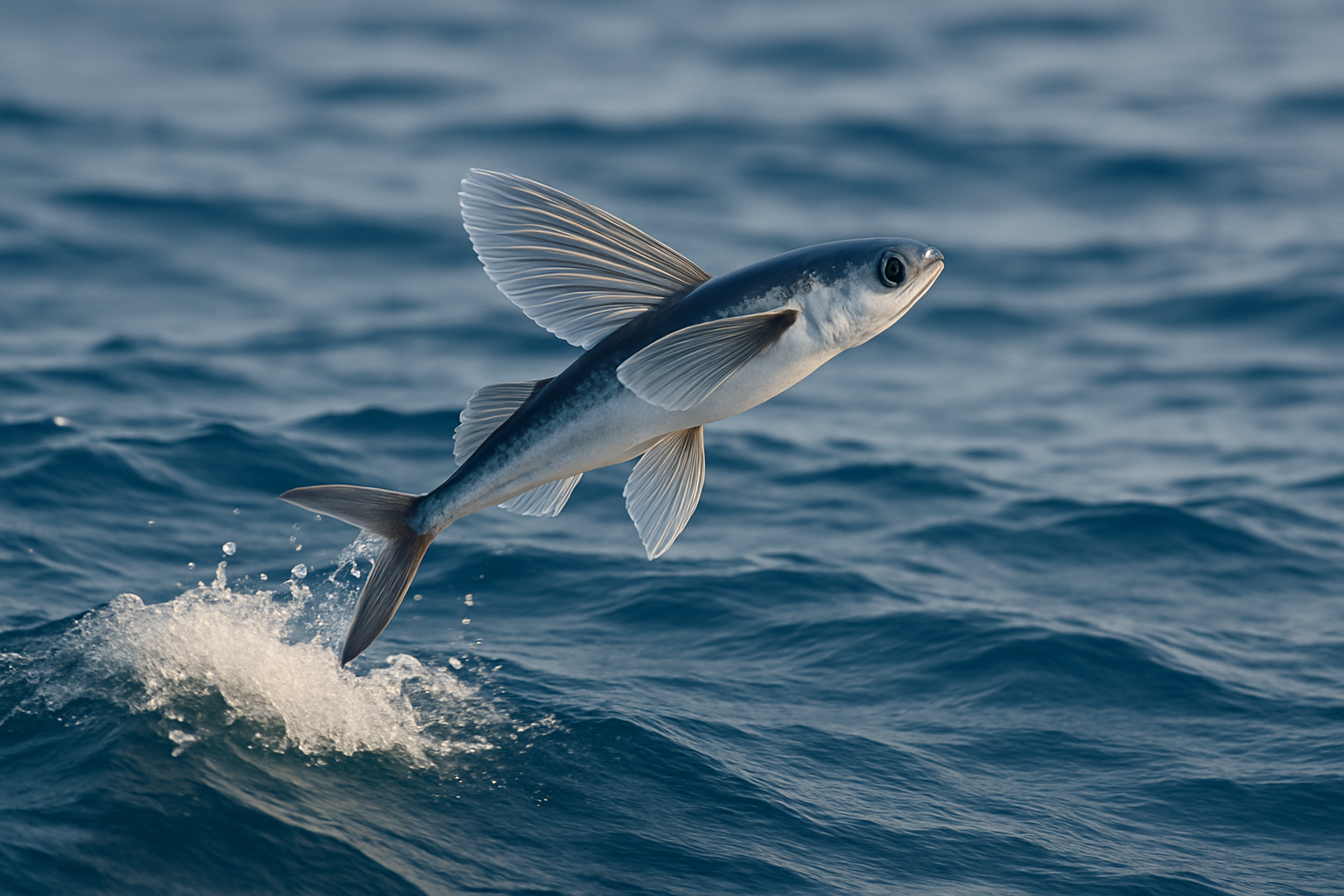Aquatic Acrobats: The Surprising World of Flying Fish
In the vast expanse of our oceans, a remarkable group of fish defies the boundaries between water and air. Flying fish, with their unique ability to glide above the waves, have captivated scientists, sailors, and nature enthusiasts for centuries. These aquatic acrobats possess extraordinary adaptations that allow them to soar through the air, evading predators and traversing impressive distances. This article delves into the fascinating world of flying fish, exploring their biology, behavior, and the challenges they face in our changing oceans.

The Biology Behind the Flight
The secret to the flying fish’s aerial prowess lies in its specialized anatomy. Their streamlined bodies reduce water resistance, while their forked tails provide powerful propulsion. The most distinctive feature, however, is their oversized pectoral fins. These wing-like appendages can span up to 70% of the fish’s body length and are crucial for generating lift once the fish breaks the water’s surface.
Taking to the Skies: The Mechanics of Flight
When a flying fish prepares for takeoff, it builds up speed underwater, reaching velocities of up to 37 miles per hour. As it approaches the surface, it spreads its pectoral fins and uses its powerful tail to launch itself into the air. Once airborne, the fish can glide for distances of up to 655 feet, using its tail to skim the water’s surface and generate additional momentum.
Evolutionary Marvels: Adapting to Life Above and Below
The flying fish’s unique ability is the result of millions of years of evolution. This adaptation serves multiple purposes, primarily as a defense mechanism against predators. By leaping out of the water, flying fish can escape threats from below, such as tuna and swordfish. However, this strategy comes with its own risks, as seabirds may prey on them during their aerial journeys.
Species Diversity: A Rainbow of Flying Fish
There are about 40 known species of flying fish, each with its own distinct characteristics. The Japanese flying fish, for example, is known for its particularly long flights, while the tropical two-wing flyingfish boasts striking blue coloration. Some species, like the four-winged flying fish, have developed additional fins that act as stabilizers during flight, allowing for even greater control and distance.
Ecological Importance and Human Impact
Flying fish play a crucial role in marine ecosystems, serving as a vital food source for larger predatory fish, seabirds, and even humans in some regions. In Barbados, the flying fish is not only a staple food but also a cultural icon, featured on the country’s coat of arms. However, like many marine species, flying fish face threats from overfishing and climate change. Warming ocean temperatures and changing currents could significantly impact their distribution and abundance.
Conservation Efforts and Future Prospects
As awareness of the flying fish’s ecological importance grows, conservation efforts are beginning to take shape. Some countries have implemented fishing regulations to protect flying fish populations, while researchers are working to better understand their migration patterns and breeding habits. These efforts are crucial for ensuring the long-term survival of these remarkable creatures and maintaining the balance of marine ecosystems.
In conclusion, flying fish represent one of nature’s most fascinating adaptations. Their ability to bridge the gap between aquatic and aerial environments continues to inspire scientific research and capture the public imagination. As we learn more about these extraordinary creatures, it becomes increasingly clear that protecting them is not just about preserving a unique species, but about safeguarding the health and diversity of our oceans as a whole. The story of the flying fish serves as a powerful reminder of the wonders that exist in our natural world and the importance of conservation efforts to ensure their survival for generations to come.





